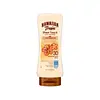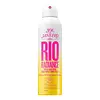What's inside
What's inside
 Key Ingredients
Key Ingredients

 Benefits
Benefits

 Concerns
Concerns

 Ingredients Side-by-side
Ingredients Side-by-side

Homosalate 5.5%
Skin ConditioningEthylhexyl Salicylate 4.5%
UV AbsorberOctocrylene 4%
UV AbsorberButyl Methoxydibenzoylmethane 2%
UV AbsorberC12-15 Alkyl Benzoate
AntimicrobialCetearyl Alcohol
EmollientPhenoxyethanol
PreservativeVp/Eicosene Copolymer
Diisopropyl Adipate
EmollientNeopentyl Glycol Diheptanoate
EmollientMica
Cosmetic ColorantDimethicone
EmollientGlycerin
HumectantParfum
MaskingPolymethylsilsesquioxane
Acrylates/C10-30 Alkyl Acrylate Crosspolymer
Emulsion StabilisingCoco-Glucoside
CleansingMethylparaben
PreservativePropylene Glycol Dibenzoate
Skin ConditioningCeteth-10 Phosphate
CleansingDicetyl Phosphate
EmulsifyingPropylparaben
PreservativeSodium Hydroxide
BufferingDisodium EDTA
Paraffin
PerfumingXanthan Gum
EmulsifyingButyrospermum Parkii Butter
Skin ConditioningJojoba Alcohol
EmollientPotassium Jojobate
Skin ConditioningSimmondsia Chinensis Butter
Skin ConditioningMangifera Indica Seed Butter
Skin ConditioningPropanediol
SolventTocopheryl Acetate
AntioxidantCarica Papaya Fruit Extract
Skin ConditioningColocasia Antiquorum Root Extract
Skin ConditioningMangifera Indica Fruit Extract
Skin ConditioningPassiflora Incarnata Fruit Extract
Skin ConditioningPlumeria Acutifolia Flower Extract
Skin ConditioningPsidium Guajava Fruit Extract
AstringentPanthenol
Skin ConditioningAloe Barbadensis Leaf Juice
Skin ConditioningSodium Ascorbyl Phosphate
AntioxidantTitanium Dioxide
Cosmetic ColorantHomosalate 5.5%, Ethylhexyl Salicylate 4.5%, Octocrylene 4%, Butyl Methoxydibenzoylmethane 2%, C12-15 Alkyl Benzoate, Cetearyl Alcohol, Phenoxyethanol, Vp/Eicosene Copolymer, Diisopropyl Adipate, Neopentyl Glycol Diheptanoate, Mica, Dimethicone, Glycerin, Parfum, Polymethylsilsesquioxane, Acrylates/C10-30 Alkyl Acrylate Crosspolymer, Coco-Glucoside, Methylparaben, Propylene Glycol Dibenzoate, Ceteth-10 Phosphate, Dicetyl Phosphate, Propylparaben, Sodium Hydroxide, Disodium EDTA, Paraffin, Xanthan Gum, Butyrospermum Parkii Butter, Jojoba Alcohol, Potassium Jojobate, Simmondsia Chinensis Butter, Mangifera Indica Seed Butter, Propanediol, Tocopheryl Acetate, Carica Papaya Fruit Extract, Colocasia Antiquorum Root Extract, Mangifera Indica Fruit Extract, Passiflora Incarnata Fruit Extract, Plumeria Acutifolia Flower Extract, Psidium Guajava Fruit Extract, Panthenol, Aloe Barbadensis Leaf Juice, Sodium Ascorbyl Phosphate, Titanium Dioxide
Butyl Methoxydibenzoylmethane 3%
UV AbsorberEthylhexyl Salicylate 5%
UV AbsorberOctocrylene 9%
UV AbsorberAcrylates/Octylacrylamide Copolymer
Alcohol Denat.
AntimicrobialBisabolol
MaskingButyloctyl Salicylate
Skin ConditioningCapryloyl Glycerin/Sebacic Acid Copolymer
Skin ConditioningCocos Nucifera Water
MaskingDiheptyl Succinate
EmollientEthyl Ferulate
AntioxidantEthylhexyl Methoxycrylene
Skin ConditioningEugenia Uniflora Fruit Extract
AstringentLeuconostoc/Radish Root Ferment Filtrate
AntimicrobialNiacinamide
SmoothingParfum
MaskingPolyester-8
Skin ConditioningPongamia Pinnata Seed Extract
Skin ConditioningPotassium Sorbate
PreservativeSodium Benzoate
MaskingBenzyl Salicylate
PerfumingCitronellol
PerfumingLimonene
PerfumingButyl Methoxydibenzoylmethane 3%, Ethylhexyl Salicylate 5%, Octocrylene 9%, Acrylates/Octylacrylamide Copolymer, Alcohol Denat., Bisabolol, Butyloctyl Salicylate, Capryloyl Glycerin/Sebacic Acid Copolymer, Cocos Nucifera Water, Diheptyl Succinate, Ethyl Ferulate, Ethylhexyl Methoxycrylene, Eugenia Uniflora Fruit Extract, Leuconostoc/Radish Root Ferment Filtrate, Niacinamide, Parfum, Polyester-8, Pongamia Pinnata Seed Extract, Potassium Sorbate, Sodium Benzoate, Benzyl Salicylate, Citronellol, Limonene
Ingredients Explained
These ingredients are found in both products.
Ingredients higher up in an ingredient list are typically present in a larger amount.
Also known as Avobenzone, this ingredient is a chemical sunscreen filter that provides protection in the UV-A range.
Avobenzone is globally approved and is the most commonly used UV-A filter in the world.
Studies have found that avobenzone becomes ineffective when exposed to UV light (it is not photostable; meaning that it breaks down in sunlight). Because of this, formulations that include avobenzone will usually contain stabilizers such as octocrylene.
However, some modern formulations (looking at you, EU!) are able to stabilize avobenzone by coating the molecules.
Avobenzone does not protect against the UV-B range, so it's important to check that the sunscreen you're using contains other UV filters that do!
The highest concentration of avobenzone permitted is 3% in the US, and 5% in the EU.
Learn more about Butyl MethoxydibenzoylmethaneEthylhexyl Salicylate is an organic compound used to block UV rays. It primarily absorbs UVB rays but offers a small amount of UVA protection as well.
Commonly found in sunscreens, Ethylhexyl Salicylate is created from salicylic acid and 2-ethylhexanol. You might know salicylic acid as the effective acne fighter ingredient and BHA.
The ethylhexanol in this ingredient is a fatty alcohol and helps hydrate your skin, similar to oils. It is an emollient, which means it traps moisture into the skin.
According to manufacturers, Ethylhexyl Salicylate absorbs UV wavelength of 295-315 nm, with a peak absorption at 307-310 nm. UVA rays are linked to long term skin damage, such as hyperpigmentation. UVB rays emit more energy and are capable of damaging our DNA. UVB rays cause sunburn.
Learn more about Ethylhexyl SalicylateOctocrylene protects skin from sun damage. It absorbs UV-B with peak absorption of 304 nm. It is a common sunscreen ingredient and often paired with avobenzone, a UVA filter. This is because octocrylene stabilizes other sunscreen ingredients by protecting them from degradation when exposed to sunlight. Octocrylene is a photostable ingredient and loses about 10% of SPF in 95 minutes.
Octocrylene also acts as an emollient, meaning it helps skin retain moisture and softens skin. It is oil-soluble and hydrophobic, enhancing water-resistant properties in a product.
Those who are using ketoprofen, a topical anti-inflammatory drug, may experience an allergic reaction when using octocrylene. It is best to speak with a healthcare professional about using sunscreens with octocrylene.
The EU allows a maximum of these concentrations:
Learn more about OctocryleneParfum is a catch-all term for an ingredient or more that is used to give a scent to products.
Also called "fragrance", this ingredient can be a blend of hundreds of chemicals or plant oils. This means every product with "fragrance" or "parfum" in the ingredients list is a different mixture.
For instance, Habanolide is a proprietary trade name for a specific aroma chemical. When used as a fragrance ingredient in cosmetics, most aroma chemicals fall under the broad labeling category of “FRAGRANCE” or “PARFUM” according to EU and US regulations.
The term 'parfum' or 'fragrance' is not regulated in many countries. In many cases, it is up to the brand to define this term.
For instance, many brands choose to label themselves as "fragrance-free" because they are not using synthetic fragrances. However, their products may still contain ingredients such as essential oils that are considered a fragrance by INCI standards.
One example is Calendula flower extract. Calendula is an essential oil that still imparts a scent or 'fragrance'.
Depending on the blend, the ingredients in the mixture can cause allergies and sensitivities on the skin. Some ingredients that are known EU allergens include linalool and citronellol.
Parfum can also be used to mask or cover an unpleasant scent.
The bottom line is: not all fragrances/parfum/ingredients are created equally. If you are worried about fragrances, we recommend taking a closer look at an ingredient. And of course, we always recommend speaking with a professional.
Learn more about Parfum